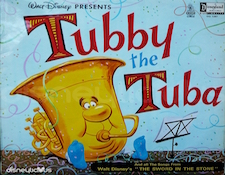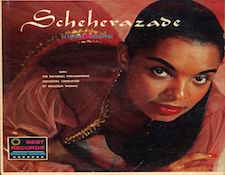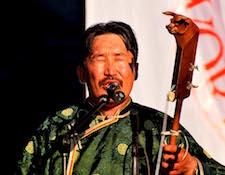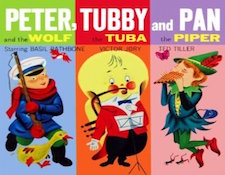It’s the time of year for saving money!
I like music. Just about all kinds of music. Not ALL “all kinds of it”, but close enough that the rest doesn’t really matter. That wasn’t always the case, though. While, as a little kid, I had grown up on such standard fare as “Tubby the Tuba” (Still brilliant, at least in the incomparable Danny Kaye version) and classics like Grieg’s Peer Gynt Suite, Rimsky-Korsakov’s Scheherazade, and the soundtrack album from Disney’s Fantasia, by the time I was starting to become a teenager, I was already starting to become a musical snob.
 Although I did embrace some of the new rock ‘n’ roll music that was popular with the other kids – “Sh-Boom”, or “Little Darlin'”, for example, or, when it came along, stuff like the Coasters (“Why’s everybody always pickin’ on me?), or Fats Domino singing “Blueberry Hill”, for the most part I listened ONLY to classical music, and ONLY to the music of the Baroque era, and I loudly proclaimed to anyone who would listen, that music had ceased to be written in 1759, with the death of Handel.
Although I did embrace some of the new rock ‘n’ roll music that was popular with the other kids – “Sh-Boom”, or “Little Darlin'”, for example, or, when it came along, stuff like the Coasters (“Why’s everybody always pickin’ on me?), or Fats Domino singing “Blueberry Hill”, for the most part I listened ONLY to classical music, and ONLY to the music of the Baroque era, and I loudly proclaimed to anyone who would listen, that music had ceased to be written in 1759, with the death of Handel.
What ultimately got me out of that frame of mind was, at the tender age of twelve, becoming a Hi-Fi Crazy, which brings me to the specific thing that keyed me to write this article: On Facebook, just a couple of days ago, somebody posted a quote attributed to Alan Parsons (recording engineer, producer, performer, song writer, and leader of “The Alan Parsons Project” band) that said something to the effect that (sorry, not knowing that I would be referring to it, I didn’t keep a copy) “Most people use their equipment for listening to music. Audiophiles use music for listening to their equipment.”
While my wording may not be exact, I think the meaning is exactly what Parsons intended it to be, and not only do I agree with him completely, but I think that that quality in audiophiles is both a great thing and one of the most important and culturally enriching truths about our hobby:
 To what seems to be the majority of people, their sound equipment – whatever it may be, all the way from a shirt pocket portable radio to the most magnificent hi-fi system – is just a tool for playing the music they already like, by performers they’re already familiar with. That description certainly isn’t intended to denigrate either them or their music in any way, but it does point out a real difference between them and at least a good part of the audiophile community: The music or the artists performing it are what attracts the great listening majority, and because of that, they tend to stick to that music and those artists. Audiophiles, on the other hand – and I DON’T just mean serious Hi-Fi Crazies – are attracted by the sound, and the kind of sonic realism that attracts and excites them can be found in practically anything. It not only transcends any bounds of artist or genre, but may even go beyond the bounds of music to become the sound of just about anything at all and that, for a person who will listen, can make it the key to limitless exploration.
To what seems to be the majority of people, their sound equipment – whatever it may be, all the way from a shirt pocket portable radio to the most magnificent hi-fi system – is just a tool for playing the music they already like, by performers they’re already familiar with. That description certainly isn’t intended to denigrate either them or their music in any way, but it does point out a real difference between them and at least a good part of the audiophile community: The music or the artists performing it are what attracts the great listening majority, and because of that, they tend to stick to that music and those artists. Audiophiles, on the other hand – and I DON’T just mean serious Hi-Fi Crazies – are attracted by the sound, and the kind of sonic realism that attracts and excites them can be found in practically anything. It not only transcends any bounds of artist or genre, but may even go beyond the bounds of music to become the sound of just about anything at all and that, for a person who will listen, can make it the key to limitless exploration.
That’s how it was for me — and, I would guess, a goodly number of you, too — when I and our hobby were (remember, this was half a century ago and more) growing up together: As part of our regular listening fare there were “audiophile” recordings of ping-pong games; of marching bands; of airplanes flying overhead; of locomotives – take your pick, steam or diesel — running through your listening-room; and even (BEWARE: THIS RECORDING CONTAINS FREQUENCIES DOWN TO 4HZ, AND CAN PERMANENTLY DAMAGE YOUR HEARING AND YOUR PLAYBACK SYSTEM) a recording of an actual atomic bomb test blast recorded from just 20 miles away and we listened to them all.
 For audiophiles, having great-sounding gear meant a constant need for more and more great-sounding recordings to enjoy it with, and recordings like these opened our ears and our minds to good sound from wherever we could find it. And that, even more than the “sound effects” records, meant finding, buying, and listening to music of just about any kind or genre conceivable, by artists known or just newly discovered, and accompanied (or not – a capella was good, too) by all of our familiar instruments and even some that we may never before have even imagined.
For audiophiles, having great-sounding gear meant a constant need for more and more great-sounding recordings to enjoy it with, and recordings like these opened our ears and our minds to good sound from wherever we could find it. And that, even more than the “sound effects” records, meant finding, buying, and listening to music of just about any kind or genre conceivable, by artists known or just newly discovered, and accompanied (or not – a capella was good, too) by all of our familiar instruments and even some that we may never before have even imagined.
To give you an idea of just what I’m talking about, back in 1957, when phono cartridges (the Electro-Voice ceramic, for example) to play them with finally became available, among the very first stereo LPs to be released to the audiophile market were Audio Fidelity’s “Dukes of Dixieland Volume 2” (Vol. 1, was out already, in mono); and “Port Said“, an album of Middle Eastern music featuring Turkish belly dancer Nejla Ates performing to the music of Mohammed El-Bakkar and his Oriental Ensemble. Those were hardly what anybody could consider “mainstream”, even in those days, and since that time the tradition of dragging audiophiles by their ears to an appreciation for new performers and new kinds of music has continued, and even strengthened. Starting in the late 1980s, for example, the first of the genuinely weird, but wonderful Mysterious Voices of Bulgaria albums appeared on the scene and became an audiophile smash hit, with volume 2, even winning a Grammy. Other things, too, driven either by their sound (Tuvan or Tibetan throat singing, as just one off-the-wall example) or by the quality of their recording, have appeared in their multitudes to enrich the audiophile musical experience.
 Today, instead of the snobby kid who thought that music ended with the Baroque, I find that I like just about everything that’s well-recorded and well-performed. That includes all of Classical music; Country and Western; folk music, both traditional and composed; Big Band music; Rock , ranging from the Coasters to the Beatles to Pink Floyd, and beyond; just about every kind of ethnic music, from just about every country and culture — from gamelan to Gang-Nam style; to marching bands; to symphony orchestras; to hootenannies, to church or military choirs, to you-name-it; as long as it’s not hip-hop. And the reason that I like all of those things goes right back to that remark attributed to Alan Parsons, about Hi-Fi Crazies using music to listen to their equipment. Being a Hi-Fi Crazy was what got me to listen to all this stuff (other than Classical and Tubby-the-Tuba) NOT for the music, but for the sound. And listening to it ― even Tuvan Throat-singing, which I highly recommend –, is what got me to love it and add it to my ever-growing list of favorite things.
Today, instead of the snobby kid who thought that music ended with the Baroque, I find that I like just about everything that’s well-recorded and well-performed. That includes all of Classical music; Country and Western; folk music, both traditional and composed; Big Band music; Rock , ranging from the Coasters to the Beatles to Pink Floyd, and beyond; just about every kind of ethnic music, from just about every country and culture — from gamelan to Gang-Nam style; to marching bands; to symphony orchestras; to hootenannies, to church or military choirs, to you-name-it; as long as it’s not hip-hop. And the reason that I like all of those things goes right back to that remark attributed to Alan Parsons, about Hi-Fi Crazies using music to listen to their equipment. Being a Hi-Fi Crazy was what got me to listen to all this stuff (other than Classical and Tubby-the-Tuba) NOT for the music, but for the sound. And listening to it ― even Tuvan Throat-singing, which I highly recommend –, is what got me to love it and add it to my ever-growing list of favorite things.





